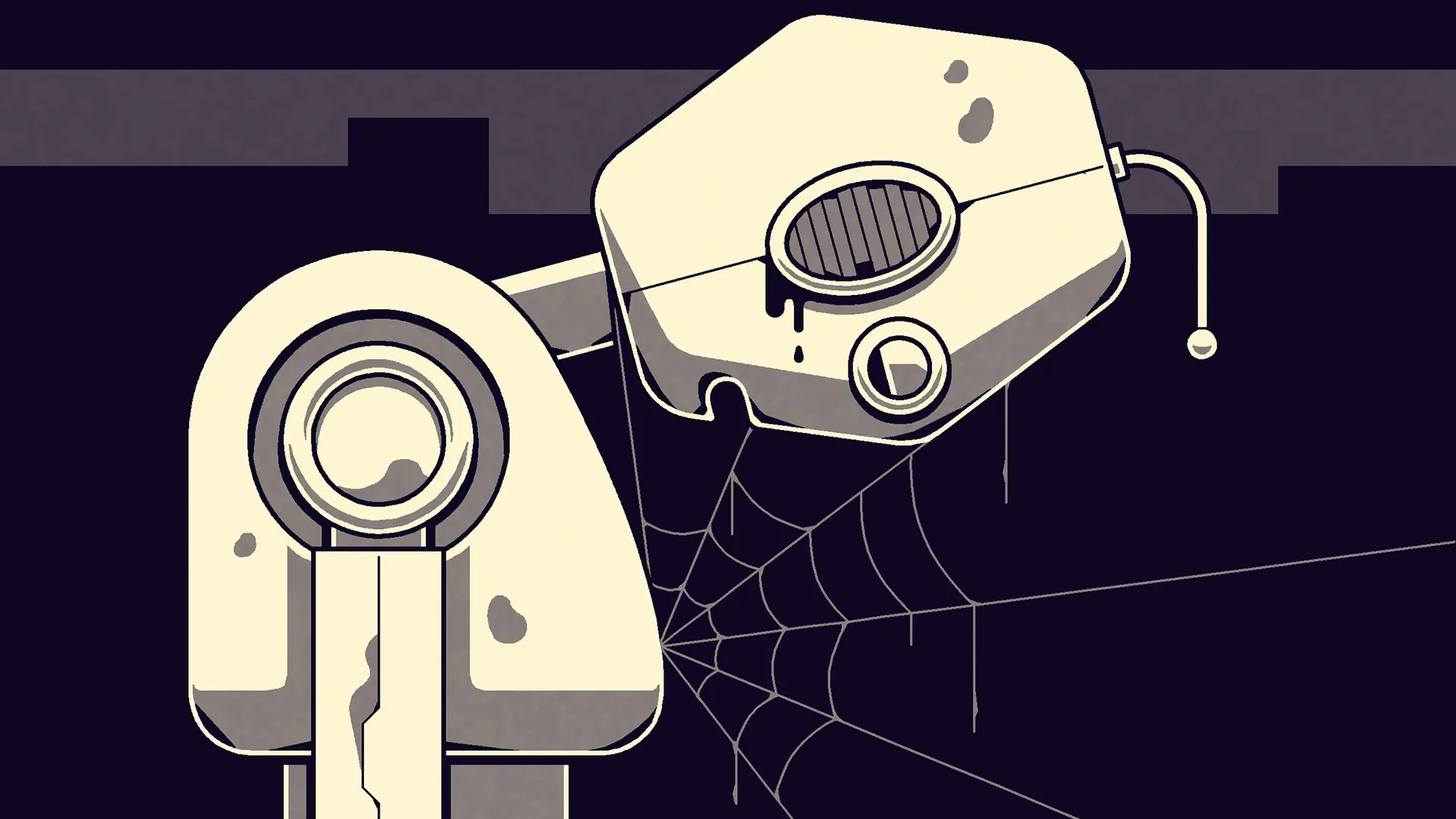尊敬的用戶您好,這是來自FT中文網的溫馨提示:如您對更多FT中文網的內容感興趣,請在蘋果應用商店或谷歌應用市場搜尋「FT中文網」,下載FT中文網的官方應用。
Pepper the humanoid robot was born in 2014. It enjoyed a brief wave of hype, including a visit to the Financial Times to meet the editor. “This is a robot that behaves autonomously, powered by love,” declared Masayoshi Son, the head of its main backer, SoftBank. Alibaba and Foxconn also invested hundreds of millions in the effort to make robotics a ubiquitous part of daily life. Yet it was not to be. You still find the occasional Pepper in a public library in Japan, unplugged, its head bowed, like a four-foot tall Pinocchio that dreamt of becoming a real boy but never did. Production halted in 2021 and only 27,000 units were ever made.
人形機器人Pepper誕生於2014年。它曾經受到短暫的追捧,包括前往英國《金融時報》與編輯會面。其主要支持者軟銀公司(SoftBank)的掌門人孫正義說:「這是一個自主行動的機器人,由愛驅動。」阿里巴巴和富士康也投入了數億美元,努力讓機器人成爲日常生活中無處不在的一部分。然而事與願違。日本的公共圖書館裏偶爾還能看到Pepper,但它沒有插電,低著頭,就像一個四英尺高的匹諾曹,夢想著成爲一個真正的男孩,但從未實現。該產品於2021年停產,僅生產了27000臺。
Yet the vision of humanoid robots — of machines so like ourselves they can perform all the work we do not want to — is too alluring to abandon for long. The recent, dramatic advances in artificial intelligence have spurred a new wave of enthusiasm for robotics. “The next wave of AI is physical AI. AI that understands the laws of physics, AI that can work among us,” said Jensen Huang, chief executive of chip designer Nvidia, earlier this year. Nvidia has ridden the boom in training AI models to become the world’s second-largest company by market capitalisation.
然而,人形機器人的願景——這樣的機器人非常像我們自己,可以完成我們不想做的所有工作——太誘人了,讓人無法長久放棄。最近,人工智慧取得的巨大進步激發了人們對機器人技術的新一輪熱情。晶片設計公司輝達(Nvidia)的首席執行長黃仁勳(Jensen Huang)今年早些時候說:「下一波人工智慧浪潮是物理人工智慧。理解物理定律的人工智慧,可以在我們中間工作的人工智慧。」輝達藉助人工智慧模型訓練的熱潮成爲全球市值第二大的公司。
Billions of dollars in venture capital are pouring into robotics start-ups. They aim to apply the same kind of model training techniques that let computers forecast how a protein will fold or generate startling realistic text. They aim, first, to let robots understand what they see in the physical world, and second, to interact with it naturally, solving the huge programming task embodied in as simple an action as picking up and manipulating an object.
數十億美元的風險投資正湧入機器人新創企業。他們的目標是應用同樣的模型訓練技術,讓電腦預測蛋白質將如何摺疊或生成驚人的逼真文字。首先,他們希望讓機器人理解他們在物理世界中看到的東西,其次,讓機器人能夠自然地與之互動,解決如拾取和操控物體這樣簡單動作中所蘊含的巨大編程任務。
Such is the dream. The latest round of investors and entrepreneurs, however, are likely to end up just as disappointed as those who backed Pepper. That is not because AI is not useful. Rather, it is because the obstacles to making an economically viable robot that can cook dinner and clean the toilets are a matter of hardware, not just software, and AI does not in itself address, let alone resolve them.
這就是我們的夢想。然而,最新一輪的投資者和創業者很可能會像那些支援Pepper的人一樣失望而歸。這並不是因爲人工智慧沒有用。相反,而是因爲要製造出經濟上可行、既能做飯又能打掃廁所的機器人,所面臨的障礙是硬體問題,而不僅僅是軟體問題,人工智慧本身並不能處理這些問題,更不用說解決它們了。
These physical challenges are many and difficult. For example, a human arm or leg is moved by muscles, whereas a robotic limb must be actuated by motors. Each axis of motion through which the limb must move requires more motors. All of this is doable, as the robotic arms in factories demonstrate, but the high-performance motors, gears and transmissions involved create bulk, cost, power requirements and multiple components that can and will break down.
這些物理層面的挑戰既多又難。例如,人的手臂或腿是透過肌肉運動的,而機器人肢體則必須由電機驅動。每個運動軸都需要更多的電機來實現肢體的移動。雖然正如工廠中的機械臂所展示的那樣,所有這些都是可以做到的,但其中涉及的高效能電機、齒輪和變速箱造成了體積、成本、功率要求以及可能並將會出現故障的多個組件。
After creating the desired motion, there is the challenge of sensing and feedback. If you pick up a piece of fruit, for example, then the human nerves in your hand will tell you how soft it feels and how hard you can afford to squeeze it. You can taste whether food is cooked and smell whether it is burning. None of those senses is easy to provide for a robot, and to the extent they are possible, they add more cost. Machine vision and AI may compensate, by observing whether the fruit is squashed or the food in the pan has gone the right colour, but they are an imperfect substitute.
在創造出所需的運動之後,還有感測和反饋方面的挑戰。例如,如果你拿起一個水果,那麼你手上的神經會告訴你它有多軟,你可以用多大的力氣捏它。你可以嚐出食物是否煮熟,聞到食物是否燒焦。要爲機器人提供這些感官都不容易,而且即使有可能,也會增加成本。機器視覺和人工智慧可以透過觀察水果是否壓扁或鍋裏的食物是否變色來進行補償,但它們並不完美。
Then there is the issue of power. Any autonomous machine needs its own energy source. The robot arms in factories are plugged into the mains. They cannot move around. A humanoid robot is most likely to use a battery, but then there are trade-offs with bulk, power, strength, flexibility, operating time, usable life and cost. These are just some of the problems. Many clever people are working to solve them and they are making progress. But the point is that these are physical challenges, long-standing and difficult. Even a revolution in AI does not make them go away.
然後是電力問題。任何自主機器都需要自己的能源。工廠裏的機械臂都插在電源上,無法四處移動。人形機器人最有可能使用電池,但這涉及到體積、功率、強度、靈活性、運行時間、使用壽命和成本之間的權衡。這些只是其中的一些問題。許多聰明的人正在努力解決這些問題,並且取得了進展。但關鍵是,這些是長期存在且困難的物理挑戰。即使人工智慧領域發生革命,也無法消除這些問題。
What, then, does AI make possible in the physical world? Rather than imagine how the technology will allow new machines, it is more practical to imagine how existing machines will change once AI is applied to them.
那麼,人工智慧能爲物理世界帶來什麼呢?與其想像這項技術將如何造就新的機器,不如想像一下一旦人工智慧應用於現有機器,它們將發生怎樣的變化,這纔是更實際的做法。
The obvious example is self-driving vehicles. In this case, the machine does not need to change at all: a car’s movement through the physical world and its power source will work as they always have, while the sensing involved in driving a car is almost entirely visual. With the new vogue for AI, the hype cycle for autonomous vehicles has died down. It should actually be the opposite: self-driving is a vast market and it is the real-world challenge AI can most easily tackle, a point that anybody tempted to invest in other applications to robotics should ponder.
最明顯的例子就是自動駕駛汽車。在這種情況下,機器根本不需要改變:汽車在物理世界中的移動及其動力源將一如既往地工作,而駕駛汽車所涉及的感測幾乎完全是視覺的。隨著人工智慧的新潮流,自動駕駛汽車的炒作週期已經平息。實際上,情況應該恰恰相反:自動駕駛汽車是一個廣闊的市場,也是人工智慧最容易應對的現實挑戰,任何想投資機器人其他應用的人都應該思考這一點。
It also makes sense to think about how the robots that already exist — from industrial robotic arms to robot vacuum cleaners — will evolve. AI-powered machine vision will subtly increase the range of tasks a robotic arm can perform and make it safer for them to work alongside humans. Lightweight, single-purpose devices such as robot vacuum cleaners will gradually become more useful. In Chinese hotels, for example, it is already quite common to have a robot bring deliveries to your room. That kind of limited and controlled autonomy is the most easily delivered.
此外,考慮一下已經存在的機器人——從工業機械臂到機器人吸塵器——將如何發展也是很有意義的。人工智慧驅動的機器視覺將巧妙地增加機械臂可執行的任務範圍,並使其與人類一起工作時更加安全。機器人吸塵器等輕型、單一用途的設備將逐漸變得更加有用。例如,在中國的酒店裏,讓機器人把外賣送到房間已經非常常見了。這種有限的、可控的自主性是最容易實現的。
In this way, AI will slowly advance us closer to androids. As for a robot like Pepper that can clean the toilet — sadly it is far easier to make one that writes bad poetry, and that is unlikely to change any time soon.
透過這種方式,人工智慧將慢慢推動我們向人形機器人靠近。至於像Pepper這樣能清潔馬桶的機器人——很遺憾,製造一個會寫糟糕詩歌的機器人要容易得多,而且這種情況也不可能在短期內改變。

